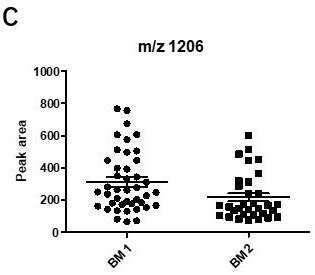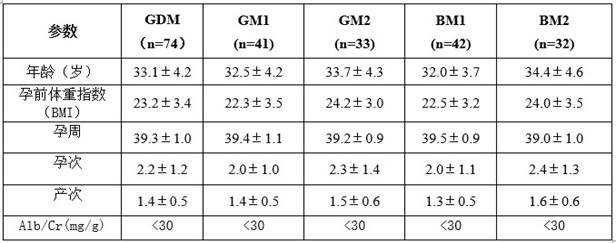Application of urine protein delta homolog 1 and polypeptide fragment thereof in gestational diabetes mellitus
A technology of gestational diabetes and polypeptide fragments, which is applied in the determination/testing of microorganisms, biological testing, disease diagnosis, etc., can solve the problem of decreased expression of DLK1, and achieve the effect of convenient storage
- Summary
- Abstract
- Description
- Claims
- Application Information
AI Technical Summary
Problems solved by technology
Method used
Image
Examples
Embodiment 1
[0019] Example 1 Urine Specimen Collection and Processing
[0020] The clean midstream urine samples of 74 patients with gestational diabetes mellitus (GDM) in the first trimester (8-12 weeks) were collected from the obstetrics clinic and hospitalization of Beijing Shijitan Hospital affiliated to Capital Medical University, aged 24-42 years. Patients with gestational diabetes met the 2011 American Diabetes Association (ADA) diabetes diagnosis and treatment standards, all clinical data from early pregnancy to 42 days postpartum were complete, and 75g sugar OGTT test was performed at 24 to 28 weeks of pregnancy. Without acute and chronic infection, tumor, cardiovascular disease and severe liver and kidney dysfunction, 74 patients with gestational diabetes were divided into GM1 group (FPG5.1%. After the urine was collected, it was centrifuged at 400×g for 5 minutes, the supernatant was taken, aliquoted, and frozen at -80°C. At the same time, in order to track the differences ...
Embodiment 2
[0024] Example 2 Magnetic bead purification and screening of urine peptides
[0025] Weak cation-exchange magnetic beads were used to enrich the peptides in urine, and matrix-assisted laser desorption ionization time-of-flight mass spectrometry (MALDI-TOF MS) was used to analyze the peptide spectrum in urine. After calibrating the instrument with a standard, mix 1 μl of the eluate with 10 μl of matrix (0.3 % α-cyano-4-hydroxycinnamic acid, HCCA), and take 1 μl to spot on the Anchorchip (Autoflex MALDITOF, Bruker-Dalton) target plate on, dry at room temperature. The sample is ionized by nitrogen laser irradiation and then subjected to mass spectrometry analysis, collecting data in the range of 1000-10000 Da, and obtaining a mass spectrogram composed of protein peaks with different mass-to-charge ratios. For each MALDI crystallization site, a total of 400 laser irradiations (50 irradiations at 8 different positions of each crystallization site), the average value represents ...
Embodiment 3
[0026] Example 3 Statistical Analysis
[0027]Pearson correlation analysis was used to correlate the FPG, HbA1c and urine peptide markers of GDM patients, and the two-sided correlation P<0.05 was considered statistically significant. Using the Fisher discriminant function analysis module of SPSS, the independent variables of FPG, HbA1c level, peak urinary peptide biomarkers, neonatal blood glucose (NFPG), neonatal height (NH) and neonatal weight (NW) in GDM patients were established to correlate with Classification discriminant function for GDM glucose metabolism status. The GM1 and GM2, BM1 and BM2 group samples were first classified to clarify the diagnostic performance of the discriminant analysis function model.
PUM
 Login to View More
Login to View More Abstract
Description
Claims
Application Information
 Login to View More
Login to View More - R&D
- Intellectual Property
- Life Sciences
- Materials
- Tech Scout
- Unparalleled Data Quality
- Higher Quality Content
- 60% Fewer Hallucinations
Browse by: Latest US Patents, China's latest patents, Technical Efficacy Thesaurus, Application Domain, Technology Topic, Popular Technical Reports.
© 2025 PatSnap. All rights reserved.Legal|Privacy policy|Modern Slavery Act Transparency Statement|Sitemap|About US| Contact US: help@patsnap.com


